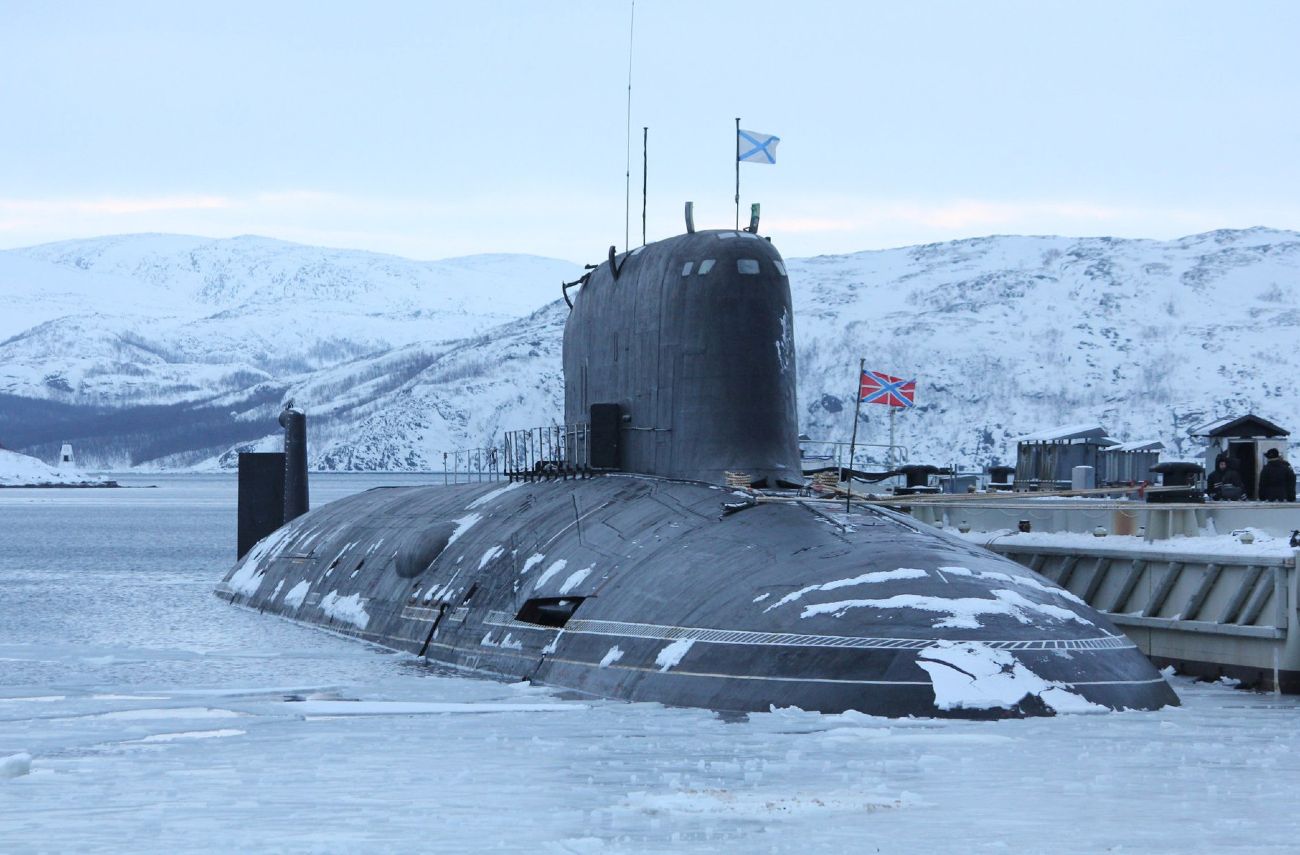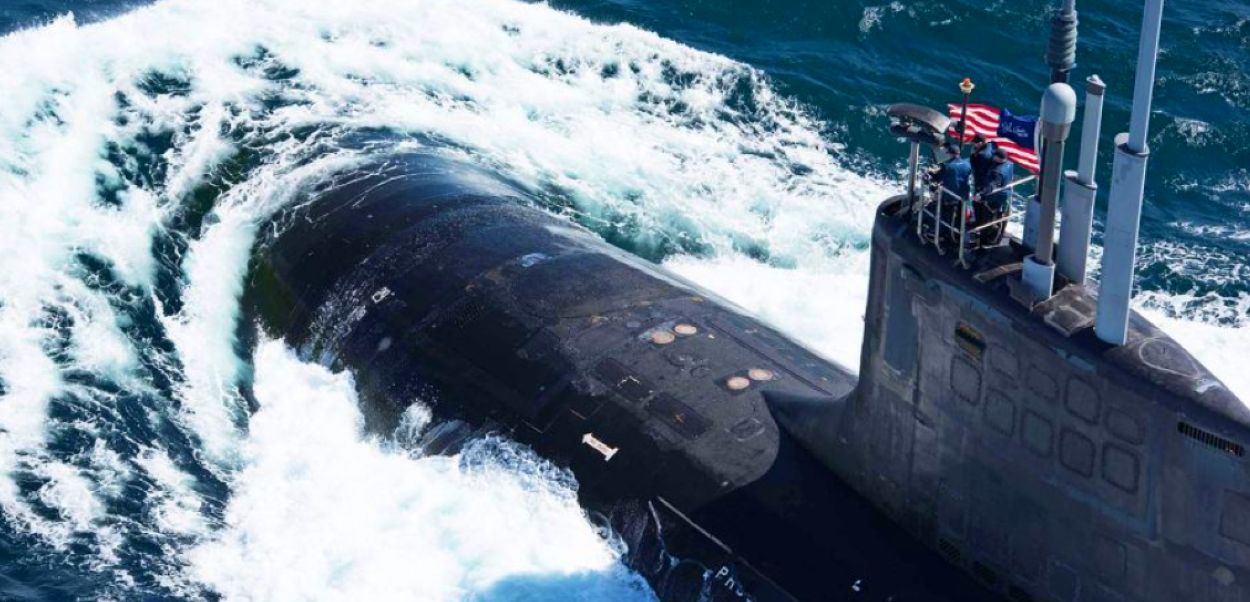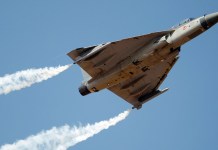On April 6, the U.S. Navy’s submarine fleet will welcome the SSN New Jersey, a Virginia-class fast-attack submarine believed to be among the best and deadliest that can “extinguish” a Chinese invasion of Taiwan. It will be commissioned at Naval Weapons Station Earle (NWSE) in Monmouth County, New Jersey.
“The USS New Jersey is a Pre-Commission Unit 796 Virginia-class submarine, which is the third naval vessel named after the state of New Jersey,” according to Commissioner Susan M. Kiley, liaison to the Office on Veteran Services.
The SSN New Jersey, officially named SSN 796, is said to be costing approximately $3.5 billion. This Virginia-class submarine is nuclear-powered, allowing for extended operations without refueling, and is equipped with advanced weapons systems for versatile combat roles.
The Virginian class submarines are designed to be operational for long enough into the 2070s.
It may be noted that a simulated wargame run 24 times in 2022 by the prestigious think tank Centre for Strategic and International Studies (CSIS) showed the effectiveness of Virginia and sister Los Angeles class submarines in wreaking havoc with the Chinese fleet attacking Taiwan.
The war game showed how the United States, Taiwan, and Japan defeated a conventional amphibious invasion by China and maintained an autonomous Taiwan.
However, this defense came at a high cost. The United States and its allies lost dozens of ships, hundreds of aircraft, and tens of thousands of service members. However, China ultimately lost much more heavily and failed to occupy Taiwan, resulting in the destabilization of the Chinese Communist Party’s rule.
Mark Cancian, Senior Adviser, International Security Program, and the host of the CSIS webinar held LIVE on January 9, 2023, said that the wargame concluded that China was unlikely to succeed in occupying Taiwan and the cost of war for all sides was high with estimates of 10,000+ total casualties.
The U.S. lost 10-20 warships, two aircraft carriers, 200-400 warplanes, and around 3,000+ troops were killed in three weeks of fighting. But, “China loses 90% of its amphibious fleet, 52 major surface warships, and 160 warplanes”.
Reportedly, the U.S. Navy has only 21 Virginia-class submarines in service, with the USS New Jersey being the 22nd and another 17 on order. The Navy is planning to purchase 66 Virginia-class submarines in total.
Over the two decades since the first USS Virginia was launched in 2003, the subs have grown more lethal. Built by General Dynamics Electric Boat Division and Huntington Ingalls Industries, the Virginia class is now the latest class of fast-attack submarines in the U.S. Navy.
With dozens of subsonic Tomahawk missiles that can hit targets 1,000 miles away (and eventually even more advanced hypersonic missiles), the Virginia class is said to have the capacity to strike deep into enemy territory while sailing in distant waters. It is also fitted with tubes that can fire Mk48 torpedoes or UGM-84 Harpoon anti-ship missiles.
At almost 380 feet long, the class is said to have a beam of 34 feet and a displacement of approximately 7,800 tons submerged. The submarine can operate at depths of over 800 ft. (about 250 meters). It can reach speeds of more than 25 nautical knots (over 28 miles per hour), and it relies on one nuclear reactor with one shaft for its propulsion.
According to Bryan Clark, a former U.S. Navy submarine officer and now a senior fellow at the Hudson Institute, “In terms of going up against Chinese and Russian submarines, the Virginia class is superior because it will detect the enemy before it gets detected.”
However, other experts, such as RAND Corp. researcher Edward Geist and Michael Petersen, director of the Russia Maritime Studies Institute at the U.S. Naval War College, say that the Yasen M class, Russia’s most advanced attack submarine, may compare well with the Virginia class.
The 13,800-ton Yasen-M is said to be the crown jewel of the contemporary Russian Navy. Armed with vertical launch tubes for anti-ship and land-attack missiles, Yasen-M targets surface vessels and coastal assets remarkably well. It is arguably as quiet as the Virginia class, though Petersen rates the Virginia class as superior in sonar technology and signal processing software.

According to defense analyst Michael Peck, the Virginia class will remain the backbone of the U.S. attack submarine fleet for decades to come. Continuously upgraded with new weapons and sensors, it will remain a formidable platform that lurks silently under the ocean.
However, the real challenge with regard to the Virginia class is its production schedule. Seen in the overall context of the U.S. naval shipyards’ capacity to not only manufacture enough SSNs and SSBNs but also to maintain them with adequate spare parts, the Navy’s aim of procuring two Virginias per year for a total of 10 between 2025 and 2028, seems highly unlikely.
Analysts say that it may take until 2028 before shipyards can produce more than the current equivalent of 1.2 subs per year.
The problem is further compounded by the fact that under the AUKUS partnership signed in 2021, the U.S. is supposed to sell Australia between three and five Virginia-class attack submarines starting in the early 2030s as a stopgap while Australia and Britain build a new SSN-AUKUS class due roughly a decade later.

Michael Shoebridge, founder of Strategic Analysis Australia and a former defense official, fears that by the time the sales near in 2030, the number of attack submarines in the U.S. Navy will fall to a historic low of 46 versus a target of 66.
“It’s going to get harder for a commander of the U.S. submarine force to say, no, I can get by with less submarines, I’m happy to sell three to my Australian friends,” he said.
However, Australian Defense Industry Minister Pat Conroy said last month (March 13) that his country had total confidence in the AUKUS deal and that the U.S. was making good progress upgrading its shipyards so they could produce the Virginia class for both navies.
Similarly, U.S. Under Secretary of the Navy, Erik Raven has said recently that though the submarine industrial base was stressed, an $11.1 billion, five-year investment in the budget request plus a promised $3 billion from Australia as part of AUKUS would lift production to target.
It remains to be seen whether the U.S. will keep its schedule of production. But there is no denying the fact that Virginia-class attack submarines are among the deadliest weapons in the world at present, weapons that cannot be seen until and unless they return to ports or unleash their arsenal of cruise missiles and torpedoes, given their stealth and firepower.
- Author and veteran journalist Prakash Nanda is Chairman of the Editorial Board – EurAsian Times and has commented on politics, foreign policy, and strategic affairs for nearly three decades. A former National Fellow of the Indian Council for Historical Research and recipient of the Seoul Peace Prize Scholarship, he is also a Distinguished Fellow at the Institute of Peace and Conflict Studies.
- CONTACT: prakash.nanda (at) hotmail.com
- Follow EurAsian Times on Google News




